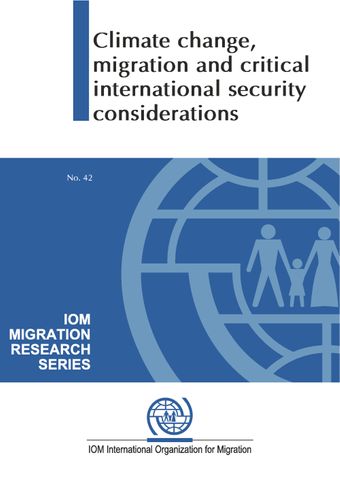The emergence of climate change-related migration

- Author: Robert McLeman
- Main Title: Climate Change, Migration and Critical International Security Considerations , pp 23-24
- Publication Date: April 2011
- DOI: https://doi.org/10.18356/c244f883-en
- Language: English
As noted earlier, although there is much talk about climate change causing environmental refugees, researchers are hard-pressed to point to specific population displacements or migration movements and state with certainty that climate change is the root cause. The most obvious impacts of climate change are currently being observed at high latitudes. In the Arctic, changes in permafrost, land and sea ice conditions are having a clear and documented impact on livelihoods, economic activities and social well-being (Berkes and Jolly, 2001; Ford et al., 2006). Infrastructure in some Arctic communities has been damaged or is in imminent danger of being damaged (Instanes et al., 2005). Indigenous peoples across the Arctic are having to make adjustments to their traditional hunting, fishing, and food gathering systems (Nuttall et al., 2005). However, at least so far, there is no documented evidence of people migrating out of the Arctic for climate change-related reasons. On the contrary, as Northern shipping lanes become increasingly ice-free and as resource companies enter the region in search of newly revealed hydrocarbon and mineral resources, the resultant economic growth can be expected to draw migrants to the North. The first large migration clearly attributable to climate change may therefore be an influx of opportunity-seeking migrants to Northern communities, likely numbering in the tens of thousands across various Arctic nations.
-
From This Site
/content/books/9789213630297c015dcterms_title,dcterms_subject,pub_keyword-contentType:Journal -contentType:Contributor -contentType:Concept -contentType:Institution105

